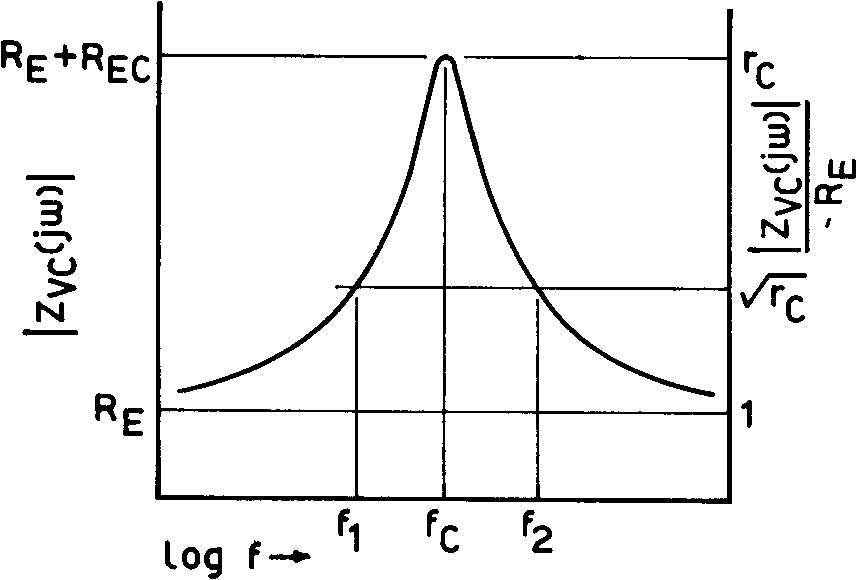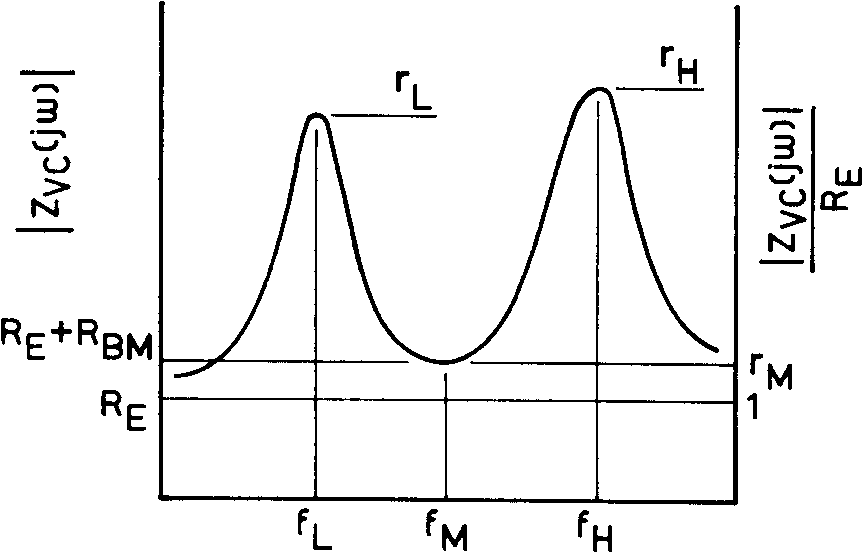


Figure 1: Closed box impedance curve.
A drive unit in free air will have an impedance curve very similar to that of a closed box. The closed box raises the resonance frequency and increases the Q-factor (the inverse of damping).

Figure 2: Vented box impedance curve.
The full frequency impedance usually exhibits a rising response a couple of octaves or so after the resonance frequency.
Some people advocate testing at higher levels as this is more like what level the speaker will actually be used at. However, Thiele and Small designed these equations to be done at low levels, so that's what I recommend. You can always test at low level and again at higher levels to see what differences may occur, you should find that as you increase drive level the resonance frequency drops.
All content on this website Copyright © 2005-2025 Richard Read, unless otherwise stated. For commercial use please contact me.